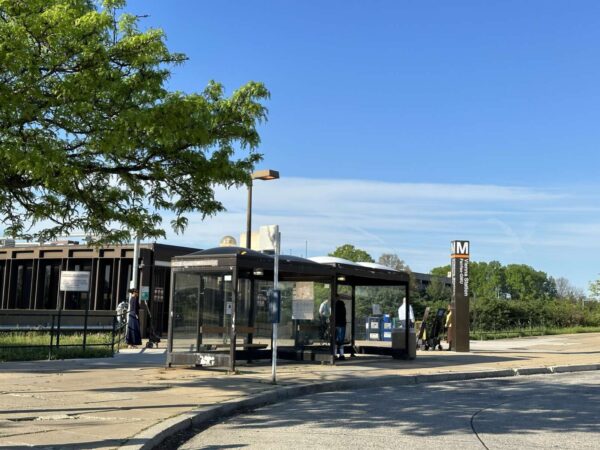
Metro will assemble an armada of shuttles this summer to support travelers during its multi-week shutdowns of several stations on the Orange, Silver and Green lines.
The Washington Metropolitan Area Transit Authority (WMATA) announced yesterday that free shuttle buses will be available throughout the closures, which will begin on May 12 and roll out to Fairfax County’s Orange Line stations starting June 3.
During the closures, the agency will conduct maintenance work at each of the stations and modernize their facilities.
“Continued maintenance work is essential to safe and reliable rail service,” WMATA Chief of Infrastructure Andy Off said in the press release. “We are working strategically to target maintenance locations and minimize the impacts on customers as we conduct this critical work to upgrade systems, improve reliability, and modernize station facilities.”
In Fairfax County, the closures will take place in two phases.
First, the Vienna, Dunn Loring, West Falls Church and East Falls Church stations will close from June 3 to 25 so that Metro can replace the 40-year-old train rails and add fiber-optic cables.
“Replacing the track in this section is a top priority to ensure safety and increase reliability,” WMATA said.
A combination of local, express and limited-stop shuttle service will be offered:
Orange Line Shuttle: Local service between Vienna, Dunn Loring, West Falls Church, East Falls Church, and Ballston-MU stations.
- Local service between McLean, East Falls Church, and Ballston-MU stations.
- Every 5 minutes during rush hours. (6- 9 a.m., 3-7 p.m.)
Orange Line Express: Express service between Vienna and Rosslyn stations.
- Service every 5 minutes during rush hours. (6-9 a.m., 3-7 p.m.)
- Service every 10 minutes during non-rush hours. (9 a.m.-3 p.m., 7-9 p.m.)
Silver Line Limited: Limited-stop service between Washington Dulles International Airport, McLean, and Rosslyn.
- Service every 5 minutes during rush hours. (6-9 a.m., 3-7 p.m.)
- Service every 10 minutes during non-rush hours. (9 a.m.-3 p.m., 7-9 p.m.)
Silver Line riders will need to take a shuttle to bypass the East Falls Church transfer station. Trains between Ashburn and McLean will run every eight minutes, except after 9:30 p.m., when they will operate every 10 minutes.
Both of the Falls Church stations will reopen on June 26, but the Vienna and Dunn Loring stations will stay closed through July 16 to finish the rail replacement and cable installation.
Free local shuttle service will be provided betwen the Vienna, Dunn Loring and West Falls Church stations, operating every 5 to 10 minutes on weekdays and every 10 minutes on weekends while Metrorail is open.
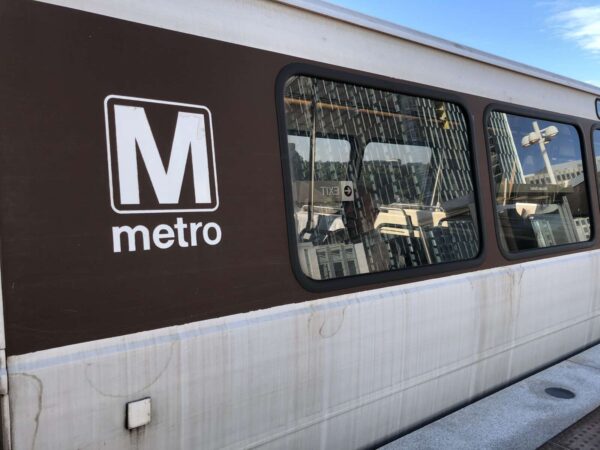
The final touches on the first phase of the Silver Line project that brought Metro into Tysons are falling into place, almost a decade after the five new rail stations in Fairfax County opened.
Construction on the shoulder of the Dulles Connector Road — which links the Dulles Toll Road in Tysons to the I-66 interchange in Idylwood — has been completed, according to a presentation that the Fairfax County Department of Transportation gave to the Board of Supervisors’ Phase 1 Dulles Rail Transportation Improvement District Commission on Tuesday (March 28).
The shoulder reconstruction, which began in April 2022, and some manhole repairs were the last “outstanding” items in the Dulles Corridor Metrorail Project’s first phase, FCDOT Special Projects Division Chief Martha Coello told the commission.
Some lane closures were in place this week for the shoulder construction. A spokesperson for Metropolitan Washington Airports Authority didn’t respond by press time on whether that was the last round of closures.
With a total cost of $2.98 billion, the first phase expanded Metro to Tysons and Reston, launching passenger service in July 2014.
To continue paying off debt from the project, the commission approved a flat tax rate of nine cents per $100 of assessed value for commercial and industrial properties in the special tax district created to fund the Silver Line.
Fairfax County Department of Management and Budget Deputy Director Joe LaHait recommended continuing the current tax rate into fiscal year 2024, which begins July 1, “since coverage in the prior fiscal year (FY2022) cannot be maintained at or above the 1.4x threshold,” an advisory board reported to the commission.
The tax district’s policy, adopted in 2013, dictates that the tax rate should be set at a level that would cover 1.4 times the amount of debt owed each year. The rate can be lowered by up to two cents if that level of coverage has been maintained for two consecutive years.
Though coverage is projected to exceed 1.4 in 2023 and 2024, it dipped below that target to 1.36 for the first time ever last year, according to county staff.
Since it took effect in 2005, the Phase 1 tax district has generated approximately $428.5 million, including $15.5 million in the current fiscal year 2023, as of February — enough to cover the $400 million that Fairfax County was tasked with giving to the MWAA for the project.
“All debt has been issued for this tax district and reached the $400 million cap paid to the Airports Authority,” the advisory board’s minutes from its March 15 meeting said. “The funds were collected via cash contribution and bonds.”
With the county’s obligation covered, the tax district revenue will now be used to pay off debts. As of June 30, it had about $125 million in outstanding debt.
At its Tuesday meeting, the commission also approved a tax rate of 18 cents per $100 of assessed value for the special tax district for the Silver Line’s second phase, which extended Metro from Reston to Ashburn in Loudoun County.
The approved rate represents a two-cent reduction from the current fiscal year 2023 rate, which staff said in March 2022 couldn’t be lowered.
Per a staff presentation, the Dulles Airport and Ashburn stations remain the busiest of the new stations since they opened in November. New Fairfax Connector bus routes supporting the stations in Reston and Herndon are carrying 579 passenger trips per day.
The tax rates for both the Phase 1 and Phase 2 districts will be formally adopted when the Fairfax County Board of Supervisors approves a budget for FY 2024 on May 9.
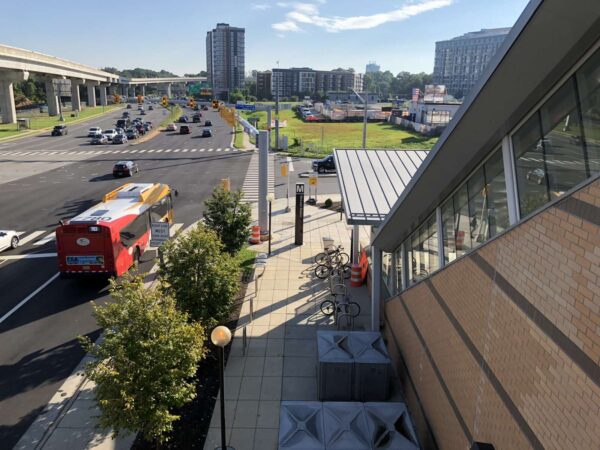
Some transportation projects on the horizon have sparked excitement among the Fairfax County Board of Supervisors over potential transit improvements.
Visualize 2050 is a federally-mandated long-range transportation plan with an emphasis on projects that adhere to new emission reduction goals.
In a meeting of the Board of Supervisors Transportation Committee earlier this month, staff said the county has six projects it’s considering adding to Visualize 2050. The projects have to be considered regionally significant.
- Route 7 Bus Rapid Transit (BRT)
- Orange Line Metrorail Extension
- Yellow Line Metrorail Extension to Hybla Valley
- I-495 Southside Project
- I-95 Counterflow Express Lanes
- Seven Corners
Providence District Supervisor Dalia Palchik said the inclusion of Route 7 BRT is a positive step, helping take the project from the conceptual stage to something being actively planned.
“I think it’s really exciting that we’re considering this and I would support BRT 7, “Palchik said. “It brings dedicated bus lanes. We’re talking about reducing congestion and using these roads to more easily have multimodal. I think it’s not super helpful when buses get stuck in traffic for people to give up their cars and opt for the bus.”
The Route 7 BRT proposal would eventually connect Tysons to Alexandria on a new route designed to prioritize public transit. Mason District Supervisor Penny Gross said she’s hopeful districts between the two major stops will also benefit.
“Certainly Route 7 BRT will go all along Route 7, coming from Alexandria [in one direction] and Tysons [from the other],” Gross said. “I’m hoping that [Mason District] can be the golden spike.”
Elsewhere in county planning, Franconia District Supervisor Rodney Lusk advocated for Metro’s Yellow Line extension down into Hybla Valley.
“That’s in alignment with what we’re doing with bus rapid transit and our Embark Richmond Highway study,” Lusk said. “The goal is that we eventually get to the extension of that Metro line. I just want to advocate for that and put a plug so that it can be considered.”
County staff said there will be two public meetings on the Visualize 2050 plan in April before the project works its way through the bureaucratic process, eventually heading to plan adoption sometime in December 2024.
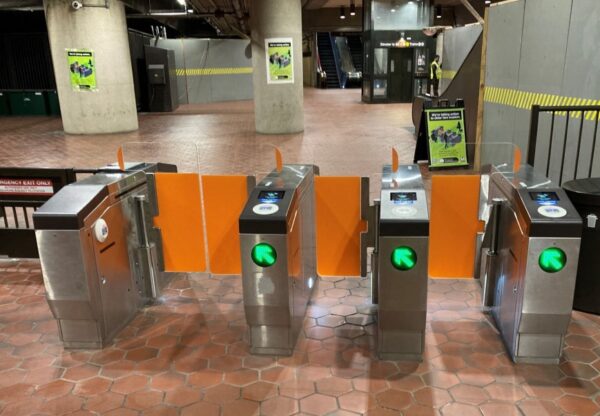
Saloon-style doors are coming to the Vienna Metro station’s fare gates.
The Orange Line terminus is one of nine stations in the first phase of Metro’s fare gate retrofits, which will install taller, glass doors on all of the transit agency’s recently modernized gates to deter people from jumping over to avoid paying to ride the rails.
The first phase will focus on stations with only one entrance and, therefore, fewer gates, Washington Metropolitan Area Transit Authority officials told the Board of Directors on Thursday (March 23).
Other stations in the first phase include Court House and Pentagon City in Arlington; Federal Center Southwest, Congress Heights, Mount Vernon Square and Fort Totten in D.C.; and Bethesda, Wheaton and Addison Road in Maryland.
“We have done some work to determine that the infrastructure needs to do the retrofits are minimal, a way for the team to learn and progress as they’re installing these retrofits,” WMATA Chief Planning and Performance Officer Tom Webster said.
Metro began testing doors aimed at preventing fare evasion last November at the Fort Totten station, including a design with “anti-vaulting arches” that proved ineffective.
The pilot launched before the agency had even finished outfitting all stations with their first updated fare gates since the 1990s, a process that lasted from 2021 to this past December. Though Metro estimated in 2019 that fare evasion was costing it $10 million, board members didn’t want gates that evoked cages like the ones in New York City, according to DCist.
However, reducing fare evasion has emerged as a top priority for WMATA General Manager and CEO Randy Clarke since he took over the job in July.
The new gates have sensors that register all users, regardless of whether they tap their SmarTrip card to pay, giving WMATA more accurate data on rail ridership, Webster said.
So far this year, Metro has seen about 22.3 million rail users, averaging 324,000 trips on weekdays, and the roughly 404,000 trips recorded on Wednesday (March 22) represent the system’s highest single-day ridership of the pandemic, Webster reported at the board meeting.
Metro’s new data indicates that approximately 13% of those total riders didn’t pay at the fare gate. While acknowledging that riders may not be paying for a variety of reasons, including college and D.C. students who can ride for free, the agency says fare evasion affects both its finances and its optics. Read More
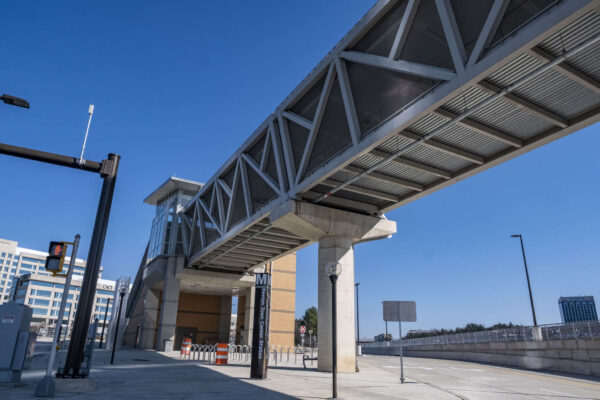
(Updated at 2:20 p.m.) Fairfax County first responders were sent to an incorrect address during a 911 call for a cardiac arrest incident at the Reston Town Center Metro station yesterday (Tuesday), leading to a delay in the response.
Based on information provided by Metro, the Fairfax County Department of Public Safety Communications dispatched emergency crews to 1901 Reston Metro Plaza — an address next to the Wiehle-Reston East Metro station, reported local public safety watcher Dave Statter.
Personnel then received an address change about 10 minutes later directing them to 12023 Sunset Hills Road, the north pavilion for the Reston Town Center station about two miles away, according to Statter.
A county spokesperson provided the following statement to FFXnow, confirming that there was a mix-up in the address:
On March 21 the Fairfax County Department of Public Safety Communications (DPSC) received a call from the Washington Metropolitans Area Transit Authority (WMATA) via the non-emergency phone line at 09:06:59 reporting a cardiac arrest at the Wiehle Metro Station. DPSC dispatched Fairfax County Fire and Rescue (FRD) to the incident at 09:08:45. The first unit arrived at the dispatched location at 09:13:10. This was identified as the incorrect location by responding personnel. Working together, FRD and DPSC redirected resources to the correct location, Reston Metro Station and arrived on the incident scene at 09:19:29.
The man later died at a hospital, according to the report.
Ian Jannetta, spokesperson for WMATA, said the organization is investigating the incident.
“Metro addresses a number of medical emergencies related to customers daily,” Janetta said. “We are looking into our response to this incident and how we can improve our efforts in the future. Our deepest sympathies are extended to our customer and their family.”
Statter says this isn’t the first time WMATA provided an incorrect address in the past.
WMATA confirmed that its control center initially gave an incorrect station address to the county fire department, noting that Metro workers were administering CPR before emergency responders arrived.
“It was rectified with Fairfax EMS during the response to the incident during which time CPR was being provided prior to their arrival,” Janetta said. “We are verifying all station addresses systemwide to ensure our control centers and jurisdictional partners have the correct information.”
(1) @fairfaxcounty confirms @WMATA gave the wrong address for the Reston Town Center #Metro Station. It delayed fire & EMS getting to a man in cardiac arrest. That man died. How did this mistake occur? #WMATA isn't saying but it fits a pattern. (more) @wmatagm pic.twitter.com/19I8QDdiI3
— Dave Statter (@STATter911) March 22, 2023
Proposed transportation changes at the West Falls Church and Franconia-Springfield Metro stations will advance to the agency’s full board, even as some raised eyebrows at the amount of public opposition to its Franconia plan.
To accommodate an upcoming extension of Frontier Drive, Metro intends to reconfigure traffic patterns at the Franconia station by adding three new bus bays and a bus layover facility, eliminating a pick-up and drop-off area, and signalizing the Metro Access Road and Frontier Drive intersections.
Washington Metropolitan Area Transit Authority staff recommended proceeding with the plan but noted that about 42% of community members who commented on the proposal opposed it, primarily because of the pick-up/drop-off area removal.
“That is a big number to oppose something,” Matt Letourneau, the WMATA Board of Directors’ finance and capital committee chair, said at a meeting last Thursday (March 9).
Currently on a median between the station’s parking garage and bus bays, the pick-up area needs to be removed to meet “adequate traffic flow requirements and reduce vehicular and pedestrian conflicts,” staff said in a presentation to the committee.
As noted in the report, the station has a Kiss and Ride lot on the parking garage’s ground floor with “significant capacity,” as well as a surface lot available for picking up and dropping off riders.
Staff said the Virginia Department of Transportation’s Frontier Road Extension project should provide clearer signage explaining where the lots are and that they’re free to use.
“The pedestrian bridge that goes from the garage to the station, I think, in part is blocking the view to that Kiss and Ride,” WMATA Real Estate and Station Area Planning Director Steven Segerlin said. “So, one of the things we talked about to VDOT was having a large sign on the garage or on the pedestrian bridge [that says] Kiss and Ride or pick-up/drop-off ahead.”
West Falls Church plan heralds future of Metro development
At last week’s meeting, the committee also accepted a report recommending reductions to the West Falls Church station’s parking and bus facilities, paving the way for over 1 million square feet of mixed-use development.
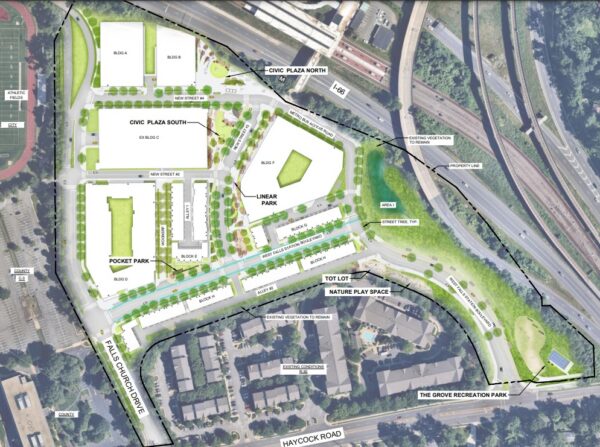
While the Fairfax County Planning Commission deferred a decision on the project to tomorrow (Wednesday), Metro board members seemed optimistic about its potential to transform not just that area in Idylwood, but the transit agency’s overall approach to development around its stations. Read More
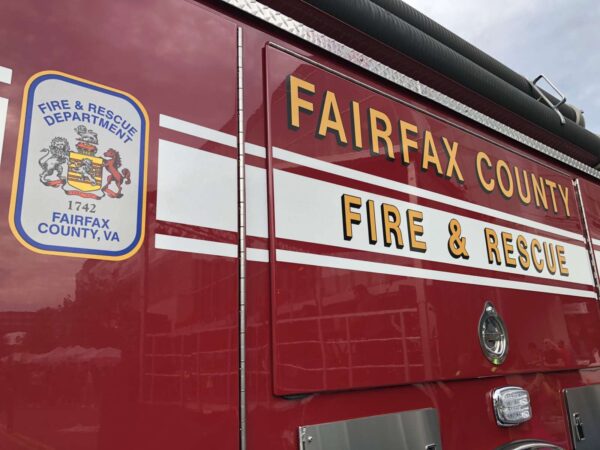
Facing financial constraints, Fairfax County hopes to defer some public safety projects as part of its bond referendum plan.
At a Fairfax County Planning Commission meeeting late last month, county staff announced intentions to establish a 2024 bond referendum for the Tysons Fire Station. The move would push a referendum for the Chantilly Fire Station from 2024 to 2030 and plans for the fire department’s well-fit training facility to 2030.
The discussion comes as part of the county’s proposed Capital Improvement Plan (CIP) for fiscal years 2024-2028, which was unveiled on Feb. 21 in conjunction with a proposed county budget.
A significant portion of the bond program goes to required contributions toward Metro, county staff say.
“It eats into our capacity for other program areas,” Martha Reed, the capital programs coordinator of the Department of Management and Budget, said.
According to Reed, fire department officials were comfortable with postponing the planned project for a new Chantilly Fire Station. The building, which is currently aging, is surrounded by a new development. She also noted that there are early and preliminary talks to redevelop the fire station.
Public safety officials also said they were comfortable with delaying a referendum for a new police station in Tysons.
The county is considering including a new place for the Criminal Justice Academy in the 2024 bond referendum, which would push out a referendum for Tysons Police Station to 2030.
In other parts of the county, a new Chantilly Library was pushed out from 2026 to 2032.
The Tysons Fire Station is the Fairfax County Fire and Rescue Department’s top priority, according to a summary of the proposed CIP. The county has money for the project design, but not enough for construction, and funds from proffers were also delayed, Reed said.
The project deferrals reflect challenges with the county’s bond referendum plan — namely backlogs in unsold bonds. After they’re approved by voters, bonds must be sold within eight years unless the courts grant a possible two-year extension.
Challenges include restrictions on annual bond sale amounts, changes to projects after voter approval, and project delays, Reed said.
Additionally, the county has factored in a roughly 10 to 12% buffer to project costs due to inflation and escalating costs in construction bids.
A report by a joint county and schools CIP committee recommended devoting one penny on the real estate tax rate toward debt service payments.
The report, completed in 2021, also recommended gradually increasing the limit on annual General Obligation bond sales from $300 to $400 million. Bonds are typically what finance most capital projects.
The county is also exploring other sources for project funding. The old Mount Vernon High School redevelopment, for example, will be supported by Fairfax County Redevelopment and Housing Authority bonds. The Tysons Community Center relies on a partnership with the Dominion Square developers.
Bonds by the Fairfax County Economic Development Authority are expected to be sold in fiscal year 2024, which begins on July 1.
But Dranesville District Commissioner John Ulfelder said he was concerned about the Tysons police station’s deferral “in light of current events” in the area, namely the recent fatal police shooting at Tysons Corner Center.
“My concern is there is a fair amount of crime in Tysons, or certainty it gets publicity,” Ulfelder said.
The county will revisit its CIP with the commission on March 29, followed by public hearings before the Board of Supervisors on April 11, 12, and 13. The final version will be adopted on May 2.
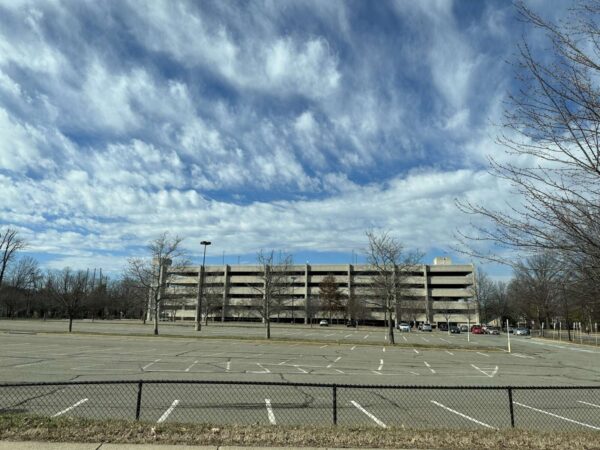
(Updated at 12:10 p.m. on 3/9/2023) A plan to reconfigure the West Falls Church Metro station’s parking and bus facilities in anticipation of redevelopment will soon be finalized.
The finance and capital committee of the Washington Metropolitan Area Transit Authority’s Board of Directors is set to vote tomorrow (Thursday) on whether to accept a staff report recommending the proposed changes, which would significantly reduce the number of parking spaces and bus bays at the station in Idylwood.
Based on feedback from an online survey and a public hearing in October, staff concluded that no revisions to Metro’s original plan are needed, according to the report, which was posted on WMATA’s website in February.
“Staff recommends approval of the proposed changes to the West Falls Church Metro Station needed to facilitate joint development adjacent to the Curtis Memorial Parkway (I-66),” the report says. “Staff finds that there should be no revisions to the proposed transit facility changes as a result of the Compact Public Hearing and staff report analysis.”
The developer group FGCP-Metro LLC intends to replace the station parking lots at 7040 Haycock Road with over 1 million square feet of residential, office and retail space, a project that supporters hope will bolster ridership and revitalize the community with new amenities.
To accommodate the development, Metro has proposed:
- Eliminating the south parking lot, which will drop the park-and-ride capacity from 2,009 to 1,350 spots
- Replacing the kiss-and-ride lot, reducing its capacity from 64 to about 20 spaces
- Reducing bus capacity from eight bays to four bays
- Eliminating 68 paid on-street metered parking spaces
The station’s 1,200-space parking garage will stay. A future phase of development will replace the north parking lot with office and residential buildings, but that construction isn’t expected for another decade.
According to the staff report, WMATA received a total of 170 public comments on the proposal, all but two of them through its online survey or comment portal. Those two comments came at the Oct. 19 public hearing.
Echoing testimony shared at a Fairfax County Planning Commission public hearing on Feb. 8, about half of the comments (51%) were in favor of the redevelopment, saying it will benefit the neighborhood more than the existing, “underutilized” parking lots.
An environmental evaluation commissioned by Metro found that the West Falls Church station has seen a 35% drop in utilization of its park-and-ride facilities since the Silver Line’s first phase opened in 2014.
Other commenters expressed concern about the parking and bus bay reductions. Some opposed eliminating any parking spaces, while others advocated for keeping more kiss-and-ride spots or suggested building a garage so parking can be retained without taking up as much land. Read More
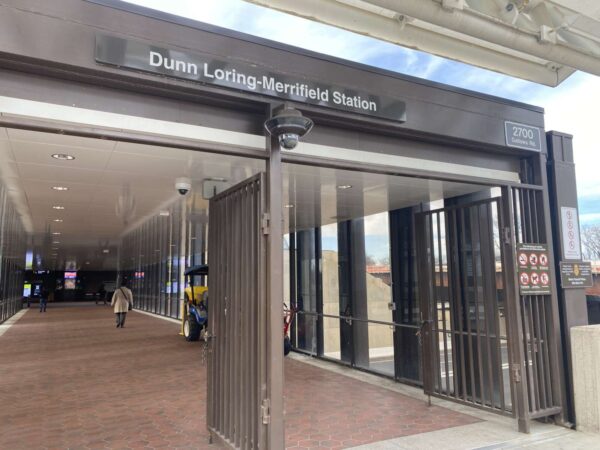
(Updated at 3:50 p.m.) The family of the man who died after being dragged by a Metro train at the Dunn Loring station yesterday (Wednesday) has launched a Gofundme to cover their memorial service expenses.
The man has been identified as 50-year-old Harold Riley by one of his daughters, according to reports by FOX5 and NBC4, which say that he had two daughters and four grandchildren.
The daughter, who organized the fundraiser, told FOX5 that her dad’s dog, Daisy, is a service animal and was wearing a service animal vest when her leash got caught in the doors of the train — contradicting the Metro Transit Police Department’s initial statement that the dog “does not appear to be a service animal.”
“We tragically lost my father today in a train accident. As he was exiting the train the doors closed while his service dog was still inside. The train took off and my father was taken with it,” the Gofundme page says. “We want to raise money to be able to have a nice service and have him cremated. My father loved his grand children and his dog more than anything and he was such an amazing ‘PanPaw.'”
The fundraiser has a set goal of $3,000.
The Washington Metropolitan Area Transit Authority confirmed this afternoon that Daisy is indeed a service dog in a statement first reported by NBC4’s Adam Tuss.
“The dog found by MTPD officers, now identified as Daisy, had a sweater vest on when she was initially found, covering a harness that read service dog,” a spokesperson said. “Again, we send our condolences and sympathies to the family of Mr. Riley.”
Just this morning, WMATA told FFXnow that its police department “found the dog without ID and did not find any vest or markers to indicate the dog was a service animal.”
In a statement yesterday, Metro Police said they received a report shortly before 1:30 p.m. that a person had been hit by a train at the Dunn Loring station.
Based on the preliminary investigation, Riley had exited the train, but the doors closed on his dog’s leash before the animal was able to deboard. When the train started moving, Riley got pulled along the platform and onto the tracks.
Riley was transported to a hospital, where he died. Daisy was found unharmed on the train at the West Falls Church Metro station.
The police department said the train operator had conducted two “safe door checks” before moving the vehicle.
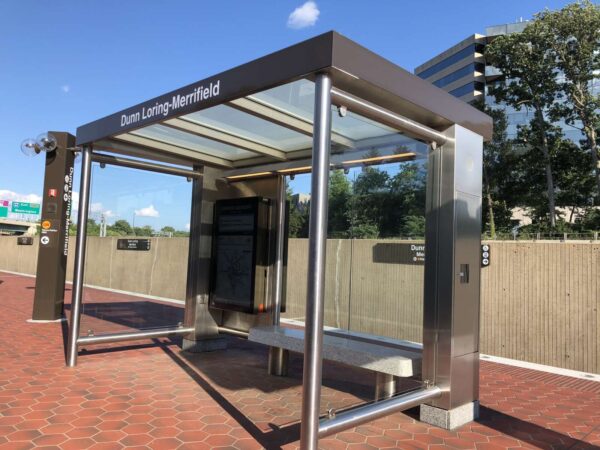
(Updated at 4:55 p.m.) A man has died after being pulled by a Metro train at the Dunn Loring station this afternoon, prompting a suspension of service between Vienna and West Falls Church.
The Washington Metropolitan Area Transit Authority’s Rail Operations Control Center and Transit Police Department received a report shortly before 1:30 p.m. that a person was being dragged by a train.
“Despite lifesaving measures, unfortunately the adult male individual was pronounced deceased after being transported to the hospital,” a Metro spokesperson said. “The investigation is in its early stages, but preliminarily it appears that an item being carried by the individual became caught in the train doors before it departed the station, dragging the individual down the platform.”
Shuttle buses and Metrobus routes 28A and 2B can also be used as alternate travel options were offered as alternate travel options until train service between the Vienna and West Falls Church stations was restored around 2:50 p.m.
The Orange and Silver lines also briefly switched to single-tracking between Ballston and Clarendon in Arlington.
Confirming social media reports that the man’s dog was found on a train at the West Falls Church station, Metro Transit Police say the man was holding the dog’s leash, which was the “item” that got caught in the train doors.
“The deceased cleared the platform and was on the platform away from the car, but upon closer review, a leash appears to be tied to the person, which was unfortunately caught in the door, leaving the dog with no ID inside of the car,” the police department said. “This obstruction caused the individual to be dragged on the platform and onto the tracks.”
The dog is now being taken care of by police, the department says, which noted that the pet “does not appear to be a service animal.”
WMATA only allows pets other than service animals on trains and buses if they’re “carried aboard in a secure container from which it cannot escape.”
According to police, surveillance video showed that the man was about 450 feet away from the train’s cab, and the train operator made two “safe door checks” before starting the vehicle.
The Washington Metrorail Safety Commission says it has launched an investigation into the incident.
Update on investigation at Dunn Loring #wmata pic.twitter.com/rGzEgUgAny
— Metro Transit Police (@MetroTransitPD) February 15, 2023
.@MetroTransitPD is on scene at Dunn Loring responding to a customer struck by a train. Orange 🟠 Line service suspended btwn Vienna and West Falls Church. Shuttle bus service requested. #wmata https://t.co/08nVrah4Tr
— MetroStrong (@wmata) February 15, 2023
Passenger critically injured at Dunn Loring Metro. PASSENGER'S DOG FOUND ON TRAIN AT WEST FALLS CHURCH METRO. #WMATA @ffxnow https://t.co/Mj8Md6b8yk
— Alan Henney (@alanhenney) February 15, 2023

